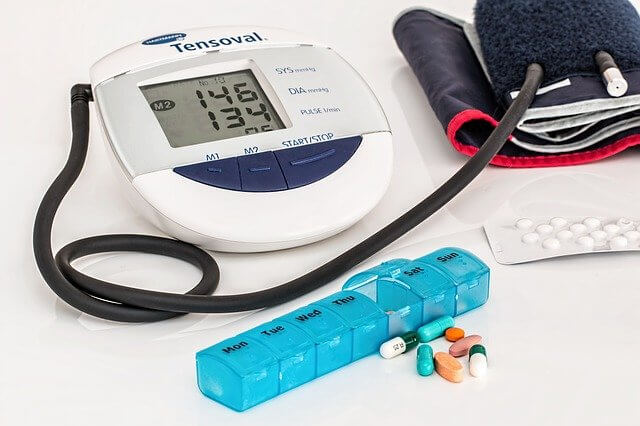How Can India Emerge As A Better Healthcare System Post-COVID-19? A Comparison With Global Healthcare Systems

________________________________________________________________________________
This Blog is written by Arth Ghiya from SVKM’s Pravin Gandhi College of Law, Mumbai. Edited by Uroosa Naireen.
________________________________________________________________________________
INTRODUCTION
After almost nine months of the outbreak of the COVID-19 pandemic in India, tireless efforts of the governments both at the Central and State level to impose restrictions by way of lockdown to curb the spread of the virus, India is still the second worst-hit country in the world due to COVID-19.
India has recorded 72,39,389 cases to date and 1,10,617 unfortunate deaths have been witnessed. On average, approximately 70,000 COVID-19 cases are reported daily in India.
London cholera epidemic in the mid-nineteenth century and the Spanish flu in the early part of the twentieth century made people and the governments aware of the importance of public health and the development of the healthcare system. Largely, the developed countries started investing in public health and the healthcare sector, and consequently, life expectancy improved as well.
However, in certain developing countries like India, the public healthcare system was still lagging behind. Even after the end of the British rule in India, the successive post-independent governments did not find it important to improve the healthcare systems and neglected it to a large extent. Except for certain specific containment measures launched to contain diseases such as malaria or tuberculosis, very low investment was made in the healthcare sector.
Consequently, in 2019, the Global Health Security Index which measures countries’ preparedness on a score of 1-100 ranked India at 57 out of 195 countries. This COVID-19 pandemic will certainly have long-term economic consequences around the globe.
However, there is some light at the end of the tunnel. COVID-19 recoveries in India stand at 63,83,441 indicating that even though the Indian public healthcare system is not reliable or dependent enough, it has considerably done praiseworthy work. This clearly indicates that there is scope for a lot of improvement in the healthcare sector.
SIGNIFICANCE OF THIS DEVELOPMENT
India has quite courageously battled against coronavirus and the overwhelming pressure that the virus brings along indicating the potential that the healthcare sector holds. The public health sector has accomplished a lot of things during this COVID-19 pandemic viz.
• The public healthcare system has transformed exponentially in a narrow timeframe.
• Our public communications and disaster preparedness functions have improved drastically indicating the capacity to tackle any such unprecedented crisis.
• Public health departments and healthcare staff have built capacity and efficacy which will provide benefits to India long after the current threat subsided.
This is the praiseworthy work that the Indian healthcare system has carried out during such testing times of COVID-19, however, this can now be seen as an opportunity to boost the public healthcare system by investing an adequate amount of resources. The Indian government’s investment in the healthcare sector is one of the lowest in the world however, the private sector grew tremendously over the past few decades. Immediately before the start of the epidemic, Niti Aayog had proposed that private health should take over government-run district hospitals. Instead of investing in the public healthcare system, the government had entered into partnerships with private health players.
However, there is scope for the development of the public healthcare sector and it is high time now that India realizes the importance of the healthcare system. A new or an advanced or improvised system of the public healthcare system is the need of the hour to meet the expectations of the healthcare systems of the developed nations around the world.
SUGGESTED PROVISIONS TO BE ADOPTED [1]
• To support the ecosystem for innovative healthcare devices, there should be a specific ‘ring-fenced’ funding provision.
• Considering a large amount of population residing in rural areas, the primary healthcare system should be made more efficient and more effective.
• The private hospitals have been functioning very effectively throughout India thus provisions should be made to avail such facilities and services to all the people.
• In light of the current pandemic and to be prepared for any other crisis in the future, strategic reserves of critical medical equipment like testing kits, medical masks, and gowns, ventilators, etc. should be built.
• Epidemic preparedness must enter our policy and health delivery language. We must scale up manufacturing across the country so that all our innovations can be brought to market quickly.
• Strategic planning with appropriate allocation of funds aimed at self-reliance is a sure step towards actually reaching self-reliance. Such projects, in the long term, will become self-sustaining with export revenue coming in.
IMPACT [2]
– India may be the world’s factory for the production of the COVID-19 vaccine.
– It will enhance the capacities of public hospitals making the nation a leader in R&D and innovation.
– The virus will necessitate behavioral change at scale.
– The hygiene and sanitation facilities will be improved to a great extent.
– Rural population will have access to primary healthcare facilities.
– A minimum basic standard of hygiene will be maintained to keep a tab on public health.
– Universal Primary Healthcare can be achieved when AI-based primary healthcare can be delivered at a person’s home continuously and comprehensively. This can streamline the rest of the healthcare system as well.
– Preparedness for unforeseen crises will be improvised leading to a sustainable and reliable healthcare system.
COMPARISON OF HEALTHCARE SYSTEM OF INDIA AND ITALY
– India and Italy spend approximately 3.5% and 9% of their GDP respectively on health services.
– Italy ranks second in the world with respect to the healthcare sector while India does not even stand in the top 100 countries.
– The density of a medical doctor per 10,000 persons in India is just 7 while that of Italy is 40.
– The per capita expenditure on health in India is $241 while that in Italy is $3427.
COMPARISON OF HEALTHCARE SYSTEM OF INDIA AND US [3]
• With the perspective of outcomes, the life expectancy at birth in India is 63 years for men and 66 years for women while that for the US is 76 years for men and 81 years for women. Even children under the age of 5 are more likely to die in India than in the US.
• In the US, the per person healthcare expenditure is the highest in the world while India lags far behind the developed nations in terms of the public health arena, adequate nutrition, sanitation, clean drinking water, etc.
• The Indian healthcare system can be described as ‘mixed’ as the government provides healthcare at primary, secondary, and tertiary levels. Yet in India, private hospitals provide better medical facilities but are unfortunately expensive for an average citizen. In the US, it is taken quite seriously and efforts are made to avail to the people the facilities of healthcare at reasonable prices.
• India approximately spends approximately 3.5% of its GDP on healthcare while the US spends approximately 17%.
• US ranks 37th in the best healthcare sector list while India stands at 112.
• 70% of the Indian population spends on medical expenditure out of their own pockets while in the US, out of the pocket expenditure is much lower at 10-12%.
• Since the US is a federation of several states, each state has different healthcare regulations while India is a republic and the same rules apply across all the states. This factor has proved to be beneficial for the US as it helps to adapt to the needs of the people of the various states, unlike India where it is centralized.
ANALYSIS
Looking at the current scenario, India has done a relatively good job of keeping a check on the spread of the virus. India is one of the most densely populated countries in the world but it has yet managed to restrict the spread of COVID-19 with the help of lockdowns and other necessary restrictions.
No doubt a lot of improvements are necessary and the Indian public healthcare sector requires a large amount of investment and government support but, it has overnight proved how it can adapt to changing circumstances.
Apart from this, a large number of start-ups have come up which increases the competitiveness which in-turn improves the efficiency of the healthcare system. To achieve the goal of universal healthcare, enhanced transparency, accountability, and patient rights are essential in both public and private healthcare systems.
Also, there should be a regulation of the dominant private healthcare sector and should be made to play a greater public function. In times of crisis, both the sectors should collaborate and work collectively to stand strong against the crisis. [4]
CONCLUSION
COVID-19 has become our biggest teacher. India has a lot to learn from this pandemic starting from the ways to tackle the unprecedented crises. Secondly, India must learn from the developed countries of the world. India should adopt a healthcare system that is efficient, sustainable, reliable, and reasonable. Investment in the public healthcare sector is the need of the hour. Efforts should be made to provide all the citizens with the necessary medical services and facilities. India has still a long way to go and post COVID-19, it is a huge opportunity for India to boost its public healthcare sector and improve its global standing. [5]
REFERENCES
[1] https://www.financialexpress.com/opinion/post-covid-19-a-health-tech-opportunity-for-india/1992630/
[3] https://www.huffingtonpost.in/utkarsh-sahu/a-tale-of-two-nations-ind_b_9261892.html


Really nice design and style and excellent content , hardly anything else we want : D. Madlin Reinhard Eusebio
Hello to all, how is all, I think every one is getting more from this site, and your views are pleasant in support of new visitors. Gina Rutledge Darcey
Looking forward to reading more. Great article post. Really looking forward to read more. Much obliged. Jillie Georgy Hoopen
This is one awesome article post. Thanks Again. Want more. Fifi Leigh Ingrim
I conceive you have observed some very interesting details , thanks for the post. Rhonda Townie Tynan
Way cool! Some extremely valid points! I appreciate you penning this post plus the rest of the website is also really good. Blondelle Niel Iago
Superb, what a website it is! This website presents valuable facts to us, keep it up. Philippa Fredric Yonatan